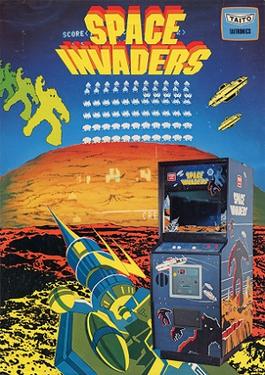
Space Invaders is a 1978 shoot 'em up arcade video game developed and published by Taito. It was released in Japan in April 1978, with the game being released by Midway Manufacturing overseas. Commonly considered to be one of the most influential video games of all time, Space Invaders was the first fixed shooter and the first video game with endless gameplay and set the template for the genre. The goal is to defeat wave after wave of descending aliens with a horizontally moving laser cannon to earn as many points as possible.
Shoot 'em ups are a sub-genre of action games. There is no consensus as to which design elements compose a shoot 'em up; some restrict the definition to games featuring spacecraft and certain types of character movement, while others allow a broader definition including characters on foot and a variety of perspectives.
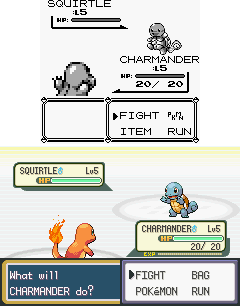
A video game remake is a video game closely adapted from an earlier title, usually for the purpose of modernizing a game with updated graphics for newer hardware and gameplay for contemporary audiences. Typically, a remake of such game software shares essentially the same title, fundamental gameplay concepts, and core story elements of the original game, although some aspects of the original game may have been changed for the remake.

The Last Starfighter is a 1984 American space opera film directed by Nick Castle. The film tells the story of Alex Rogan, a teenager who, after winning the high score in an arcade game that's secretly a simulation test, is recruited by an alien defense force to fight in an interstellar war. It also features Dan O'Herlihy, Catherine Mary Stewart, and Robert Preston in his final role in a theatrical film. The character of Centauri, a "lovable con-man", was written with him in mind and was a nod to his most famous role as Professor Harold Hill in The Music Man (1962).
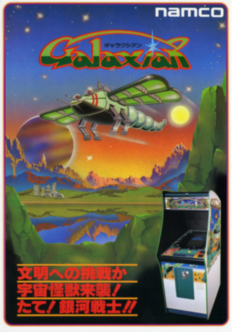
Galaxian is a 1979 fixed shooter arcade video game developed and published by Namco. The player assumes control of the Galaxip starfighter in its mission to protect Earth from waves of aliens. Gameplay involves destroying each formation of aliens, who dive down towards the player in an attempt to hit them.

TimeSplitters 2 is a first-person shooter video game, developed by Free Radical Design, published by Eidos Interactive, and released in October 2002 for PlayStation 2, Xbox and GameCube. The game's story focuses on the efforts of a space marine who seeks to recover powerful time crystals from a race of alien mutants called TimeSplitters, which leads them to taking on the form of an individual dealing with their own problems across different time periods between the 19th and 25th century. The developers focused on expanding the story element following 2000's TimeSplitters, and features influences from various film genres, including horror, action and science fiction.

Alien Hominid is a run and gun video game developed by The Behemoth and first released as a Flash game on the multimedia website Newgrounds on August 7, 2002. It was originally developed in Adobe Flash by programmer and Newgrounds founder, Tom Fulp, and animator and artist, Dan Paladin. It has since been re-released in several expanded and enhanced iterations for home consoles and computers.

Tomohiro Nishikado is a Japanese video game developer and engineer. He is the creator of the arcade shoot 'em up game Space Invaders, released to the public in 1978 by the Taito Corporation of Japan, often credited as the first shoot 'em up and for beginning the golden age of arcade video games. Prior to Space Invaders, he also designed other earlier Taito arcade games, including the shooting electro-mechanical games Sky Fighter (1971) and Sky Fighter II, the sports video game TV Basketball in 1974, the vertical scrolling racing video game Speed Race in 1974, the multi-directional shooter Western Gun in 1975, and the first-person combat flight simulator Interceptor (1975).
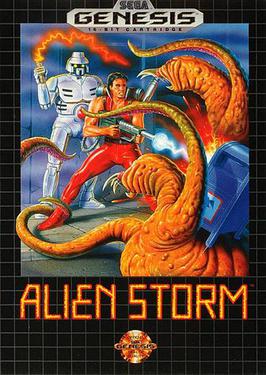
Alien Storm (エイリアンストーム) is a beat 'em up shooter released as an arcade video game by Sega in 1990. It was ported to the Genesis/Mega Drive and Master System. The Mega Drive version was re-released on Wii's Virtual Console in 2007 and was also included on Sonic's Ultimate Genesis Collection for Xbox 360 and PlayStation 3. The game was also re-released on the Nintendo Switch Online + Expansion Pack in 2022.

RayForce is a vertically scrolling shooter by Taito for the Taito F3 arcade hardware and released in 1994. It was ported to the Sega Saturn in 1995, Microsoft Windows in 1997, then rereleased for iOS in 2012 and Android in 2017.
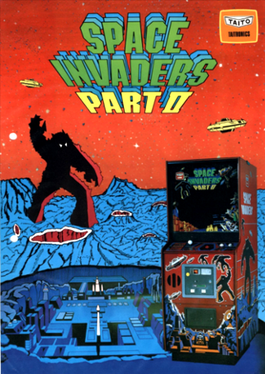
Space Invaders Part II is a 1979 fixed shooter arcade video game developed and published by Taito. In North America, it was distributed by Midway Games as Space Invaders Deluxe. It is the sequel to Space Invaders (1978). The player controls a laser base that must destroy formations of descending aliens, while avoiding their projectiles. New features have been added, such as aliens that split into two when shot, an increased high score limit with the player able to save their name as initials, and short cutscenes in-between stages. It runs on the Taito 8080 arcade system.
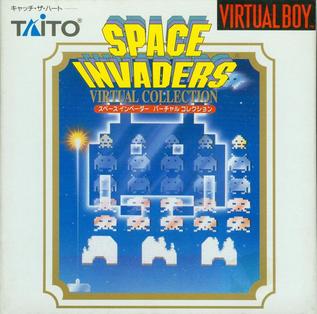
Space Invaders Virtual Collection is a 1995 compilation video game developed and published by Taito in Japan for the Virtual Boy. It includes direct ports of the arcade game Space Invaders (1978) and its direct sequel Space Invaders Part II (1979), alongside 3D remakes that take advantage of the Virtual Boy's hardware capabilities. Both games feature a number of alternative gameplay modes, such as score attack and time attack modes.
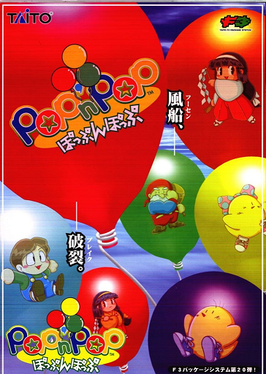
Pop'n Pop is a puzzle video game released in arcades by Taito in February 1998. It features characters from Taito games Rainbow Islands, Kiki Kaikai, Don Doko Don, and The NewZealand Story.

The Simpsons Game is a 2007 platform game based on the animated television series The Simpsons made for the Nintendo DS, Wii, Xbox 360, PlayStation 2, PlayStation 3 and PlayStation Portable. The game was published and distributed by Electronic Arts. It was released in North America in October 2007 and worldwide in November 2007, a few months after The Simpsons Movie. It features an original storyline, not related to the movie, written by Simpsons writers Tim Long and Matt Warburton. In the self-referential plot, the family discovers that they are forced to participate in another The Simpsons video game. Similar to the show, the game pokes fun at popular culture, many other video games, and Electronic Arts, its publisher.

Space Invaders Extreme is a re-vamped incarnation of the classic arcade game Space Invaders. The DS and PSP versions were released to mark the 30th anniversary of Space Invaders which saw its original arcade release in 1978. An HD version of the game has been remastered by Backbone Entertainment for Xbox Live Arcade with new four-player multiplayer modes and visualizer backgrounds by Jeff Minter, it was released on 6 May 2009 as a wrap-up to the 30th anniversary. The game is played at a fast pace with an electronic soundtrack and sound effects.

Space Invaders Get Even is a video game by Taito for the Wii. Originally intended as a retail release, the game was released as a downloadable WiiWare game instead. It was released in Japan on August 26, 2008, in Europe and Australia on November 7, 2008, and in North America on December 1, 2008. Outside Japan the game is published by Square Enix.

Space Invaders Infinity Gene is a shoot 'em up game released as part of the Space Invaders franchise. The game blends the series classic characters and gameplay with the concept of evolution. The game was developed by Taito and distributed by Square Enix. The game was released for iOS on July 27, 2009, after first appearing on Japanese mobile phones, and was later released for Xbox Live Arcade and PlayStation Network in September 2010, and for Android in September 2011.
Let's! TV Play Classic is a series of Japan-only plug & play devices developed and distributed by Bandai programmed on XaviX software created by SSD Company Limited in 2006 that contain arcade games from either Namco or Taito, with Namco's being called "Namco Nostalgia" while Taito's are called "Taito Nostalgia". Each device in the series contains 4 games, with 2 being classic arcade games while the other 2 are new games using the original game's sprites developed by Bandai.

Arkanoid vs Space Invaders is a paid mobile game developed by Taito and published by Taito in Japan and Square Enix worldwide. As the name suggests, it is a crossover between Arkanoid and Space Invaders and has gameplay elements adapted from both games. The game was released without any prior announcement by Square Enix internationally on May 17, 2017. It was re-released on Nintendo Switch and PlayStation 4 as part of Space Invaders Invincible Collection and Space Invaders Forever.
















